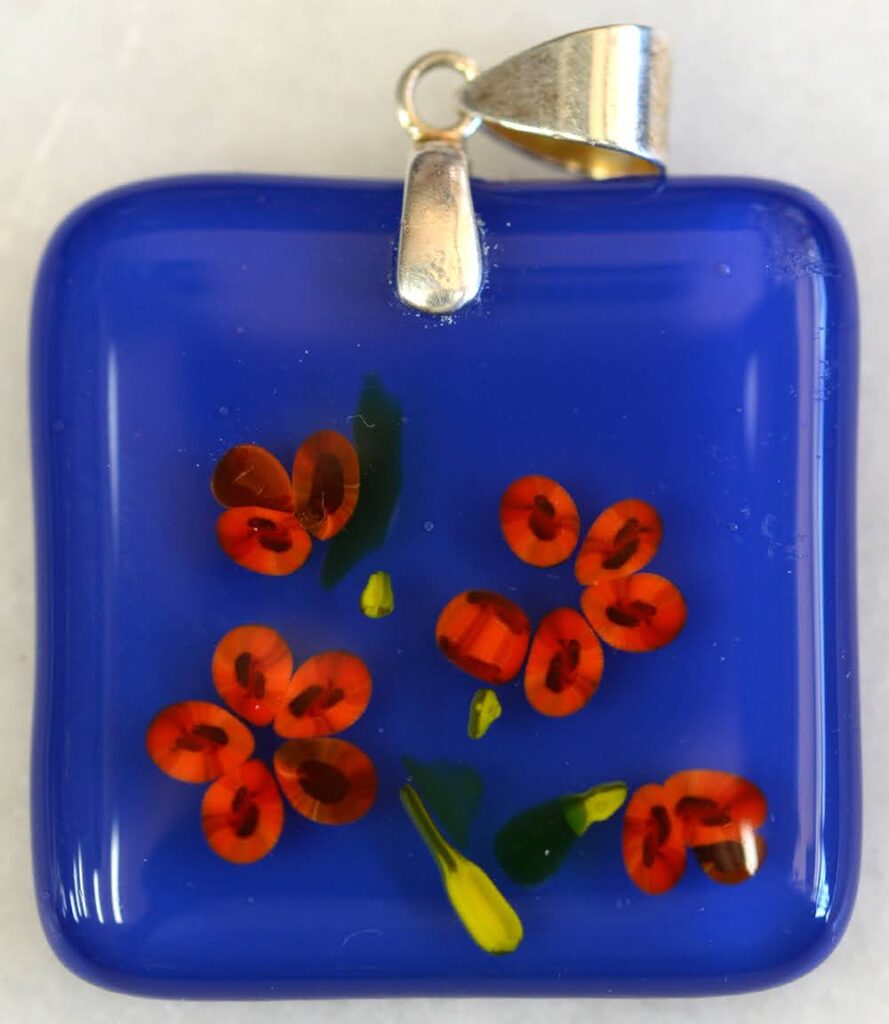Fused Glass

Warm glass is a process of using a kiln to join together pieces of glass. It was the primary method for making small glass objects for 2000 years until glass blowing took over. Heat softens glass, more heat changes it to fluid, pieces stick together forming one solid piece if it is heated and cooled properly. Warm glass is a general term for several procedures:
Fusing is glass fired in a kiln at a temperature between 593°c to 816°c
Slumping is glass fired at a temperature between 593°c to 677°c
Tacking is glass fired at a temperature between 677 to 732°c
The History of glass fusing is not certain, although there is archaeological evidence that the Egyptians were familiar with it in 2000 BC. Some say the Romans were much more prolific glass workers, and still today they sit at the top of the art of glass fusing and blowing process. Glass fusing slowed down when the blow pipe was invented and gained popularity in early 20th century in Venice Italy. Murano glass is the most famous fused glass in the world.
Terms used in the glass fusing process:
Full fuse: Heating pieces of glass until they become one
Tacking: Heating pieces of glass until they are just sticking together.
Slumping: Heating glass or already fused pieces until it is soft enough to bend or take the Shape of a mold.
Combing: Raking a tool across molten glass at a temp of 1650°f to 1750°f to change the way it looks.
Fire polishing: Softening the edges of pieces of glass under 1300°f to 1400°f.
Kiln casting: Melting small pieces of glass in a mold under 1500°f to 1600°f
Pate de verre: Fusing a paste made with small pieces of glass inside a mold at 1300°f to 1500°f
Glass casting: melting liquid glass in a mold at 1500°f to 1700°f
What do you need to get started?
Glass: all glass types can be fused, however if you intend to fuse different pieces from different sheets of glass, you have to use glass that is compatible, that have the same properties such as system 96 or 90.
Kiln: There are different sizes and qualities in the market for home and commercial use to choose from.
You also need a kiln shelf, and if you are slumping, you need different molds, fiber paper or kiln wash so that the glass won’t stick to the shelf in the process. You will also need a good glass cutter, goggles, and heat resistant gloves.
Fused Glass Course
We offer a course in making fused glass jewellery. This course is held on Thursday evenings between 5:30pm-8:30pm for three consecutive weeks, and will teach you the following:
Week 1: We teach you how to cut glass.
Week 2: You design and cut your own jewellery pieces – pendants or earrings.
Between Week 2 and 3, we fire your jewellery in our kiln.
Week 3: Add findings to your jewellery.
Please visit our course page for more information.

























































































